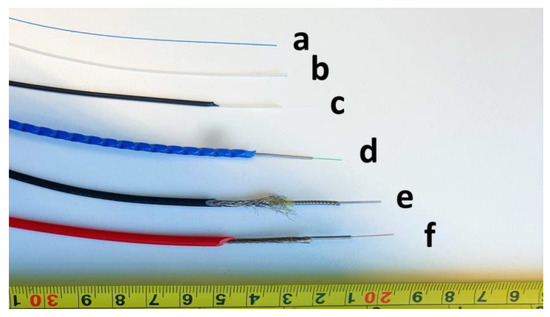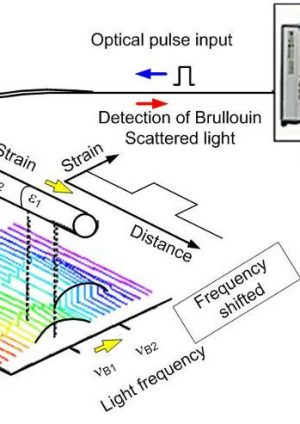Industry Standards Met by Optical Fibre Diameter Analyser Systems
Industry Standards Met by Optical Fibre Diameter Analyser Systems
Blog Article
Optimize Your Fiber Optic Efficiency: Recognizing Optical Fibre Size Analyser Modern Technology
The performance of fibre optic systems is critically affected by the accuracy of their diameter, a variable frequently ignored in the pursuit of ideal signal honesty. Comprehending the modern technology behind optical fibre diameter analysers exposes the elaborate equilibrium between dimension precision and production quality. These tools not just boost conformity with industry criteria yet additionally give real-time understandings that can preemptively deal with prospective issues. Nonetheless, the effects of their use expand beyond mere measurement; they can basically modify the landscape of fibre optic effectiveness. What elements should one consider to harness their complete possibility?
Significance of Optical Fiber Diameter
The diameter of optical fibre plays a critical duty in establishing the performance and effectiveness of interaction systems. It influences a number of essential specifications, consisting of the setting of light proliferation, depletion, and data transfer capability. Larger diameters commonly permit multiple light modes, promoting higher information transmission prices. Alternatively, smaller sizes often tend to support fewer settings, which can boost signal clarity and lower crosstalk.

Additionally, recognizing the size's ramifications can bring about cost savings by minimizing the need for signal boosting and repeaters in considerable networks (optical fibre diameter analyser). Finally, the value of optical fiber diameter can not be overstated, as it directly influences the total performance and dependability of modern communication systems

Just How Diameter Impacts Signal Quality
Signal top quality in optical fibre systems pivots significantly on the diameter of the fibre. A smaller sized diameter can lead to greater depletion rates, resulting in signal loss as light journeys with the fiber.
On the other hand, bigger diameters typically permit improved light capture and minimized modal dispersion, enhancing signal clearness. In multimode fibers, a bigger core diameter can support numerous light settings, yet it may also present intermodal dispersion, which can break down signal high quality. As a result, picking the ideal fiber size is essential for attaining the preferred efficiency in details applications.
In addition, the interaction between the fiber size and the wavelength of the light used plays a critical duty in determining the efficient transmission distance and total signal honesty. Comprehending exactly how fibre diameter impacts signal top quality is important for network designers and engineers aiming to enhance optical fibre systems for dependable, high-speed data transmission.
Summary of Diameter Analyser Technology
In lots of optical fiber manufacturing processes, exact dimension of fibre size is important for ensuring constant efficiency and quality (optical fibre diameter analyser). Diameter analysers are innovative tools developed to analyze the physical dimensions of optical fibres with high precision. They utilize innovative optical and laser technologies to measure the size, ovality, and concentricity of the fibre, thus providing critical information for quality assurance
These analysers can run in-line throughout the production process or as component of off-line screening protocols. In-line systems allow real-time surveillance, allowing manufacturers to readjust specifications right away, thereby keeping ideal production problems. Off-line analysers, on the various other hand, offer thorough evaluations of sets, making sure that any kind of inconsistencies from defined resistances are identified and attended to.
Diameter analysers considerably add Check This Out to the decrease of problems in optical fibers, boosting total product reliability. By consistently measuring vital criteria, these modern technologies promote conformity with sector requirements and specs. As the need for high-performance optical fibers remains to climb, the duty of diameter analysers ends up being significantly crucial in achieving the preferred quality and performance criteria in fiber optic systems.
Trick Attributes of Fibre Diameter Analysers
Although different models of fibre size analysers exist, they generally share numerous crucial features that enhance their capability and dependability. One of the most substantial functions is high-resolution measurement abilities, which ensure exact size readings, crucial for maintaining quality assurance in fibre manufacturing. Furthermore, numerous analysers include sophisticated optical sensors made to find minute variations in fibre size, thus supplying invaluable information for process optimization.
Another crucial attribute is real-time tracking, allowing drivers to receive instant responses on fiber size throughout the production process (optical fibre diameter analyser). This ability assists in rapid changes and lowers the likelihood of problems. Lots of analysers additionally come outfitted with user-friendly interfaces, enabling drivers to conveniently navigate via information and settings outputs
Additionally, robust information storage space and analysis capabilities are necessary for tracking historic efficiency fads and making certain conformity with industry standards. Some designs even use connection options for assimilation into existing production control systems, enhancing overall functional efficiency. Portable and small layouts enable for adaptable deployment within manufacturing environments, guaranteeing that top quality guarantee procedures are smooth and reliable. These functions jointly add to the effectiveness of fibre diameter analysers in enhancing fibre optic performance.
Finest Practices for Fibre Optimization

First, routine calibration of optical fiber size analysers is crucial. This makes sure accurate measurements and lessens possible inconsistencies that might impact you can check here efficiency. Next off, keeping a clean working setting is crucial; dust and contaminants can cause signal destruction.
Additionally, it is necessary to choose fibers that fulfill specific application needs. This includes evaluating factors such as attenuation, transmission capacity, and environmental conditions. Proper setup methods must likewise be abided by, including preventing sharp bends and extreme tension, which can compromise fibre stability.
In addition, using sophisticated surveillance systems can promote real-time efficiency evaluations, making it possible for prompt identification of problems. Regular screening and maintenance ought to be carried out to ensure that fibres remain within ideal operational parameters.
Last but not least, training personnel on the most up to date fibre optimization innovations and techniques will certainly boost their capacity to execute effective techniques. By complying with these ideal techniques, organizations can substantially enhance the efficiency and life-span of their optical fiber systems, ensuring efficient communication and data transfer.
Final Thought
In conclusion, the assimilation of optical fiber diameter analyser technology is crucial for making best use of fibre optic efficiency. By making certain exact measurements of fiber dimensions, these analysers substantially boost signal quality and minimize losses throughout data transmission.
Signal high quality in optical fiber systems hinges considerably on the size of the fiber.In lots of optical fiber production processes, precise dimension of fibre size is vital for ensuring consistent performance and high quality. As the demand for high-performance optical fibres proceeds to rise, the duty of size analysers becomes increasingly essential in attaining the preferred top quality and efficiency criteria in fibre optic systems.
These features jointly contribute to the efficiency of fiber size analysers in maximizing fiber optic efficiency.
In conclusion, the assimilation of optical fibre size analyser modern technology is critical for maximizing fiber optic performance.
Report this page